Discover the 30 very best views of Mt. Fuji including tips on when and where to visit
Japan's tallest mountain (3,776 meters) is visited by millions of tourists each year in addition to the roughly 300,000 climbers each summer. A visit to Japan would be incomplete without at least a glimpse of this grand peak, even if it's from the window of a speeding shinkansen or a faraway Tokyo skyscraper.
30. Tokyo City View of Roppongi Hills Mori Tower
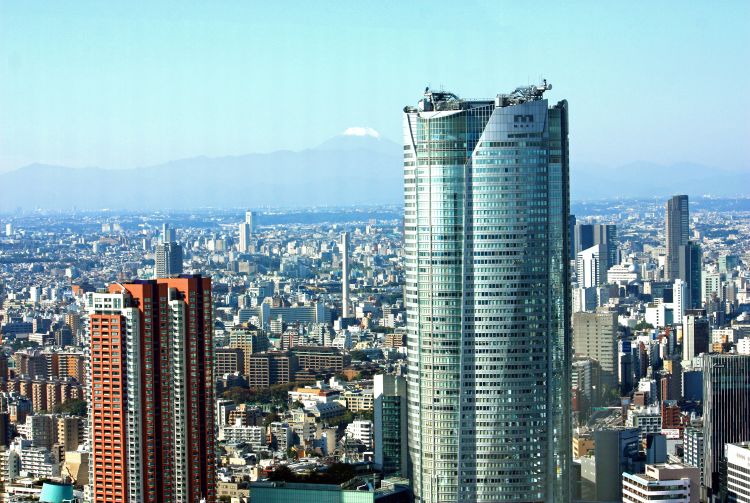
The City View observation deck on the 52nd floor of the Mori Tower building has floor-to-ceiling glass windows, offering a 360-degree view of the city and Mt. Fuji beyond.
29. Tokyo Tower
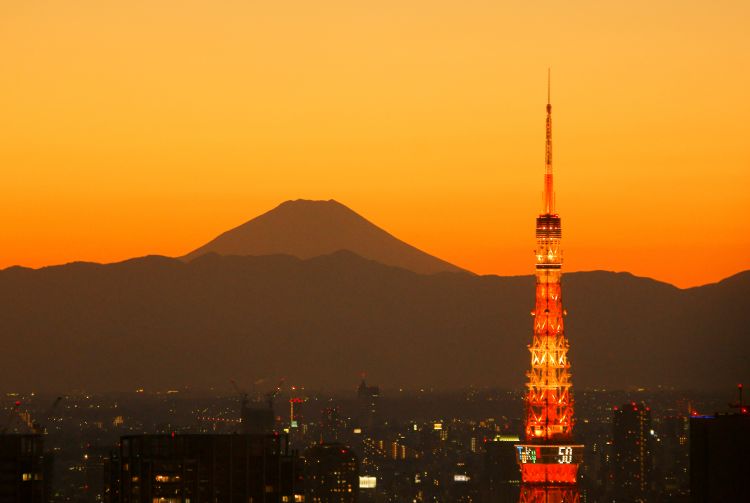
Choose to view Mt. Fuji from one of two observation decks. The views from the highest deck at 250 meters are exceptional. Mt. Fuji is best seen from here when the air is crisp and the weather is clear.
28. Mt. Takao
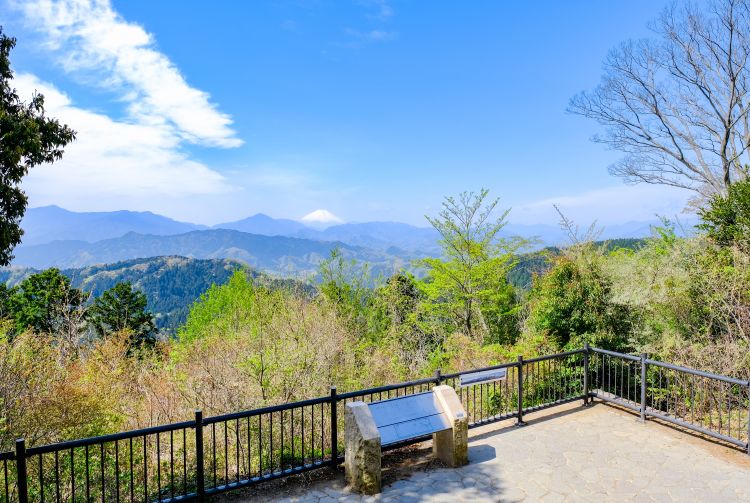
Just 50 minutes from Shinjuku by train, this scenic Tokyo mountain requires a climb for views of Mt. Fuji. From the end of the ropeway line halfway up the mountain, it is a pleasant two-hour hike to the summit.
27. Boso Peninsula

The capes and coasts of the southernmost part of Chiba offer grand views of Mt. Fuji to the west. The Hojo Coast and Shiroyama Park afford unobstructed views of the mountain across the sea.
26. Minato Mirai 21
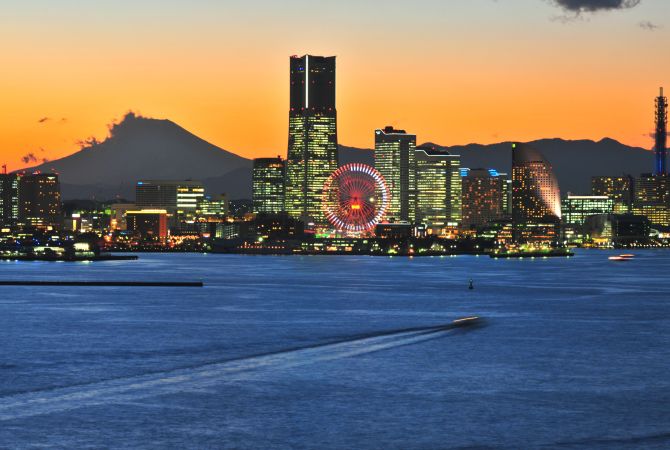
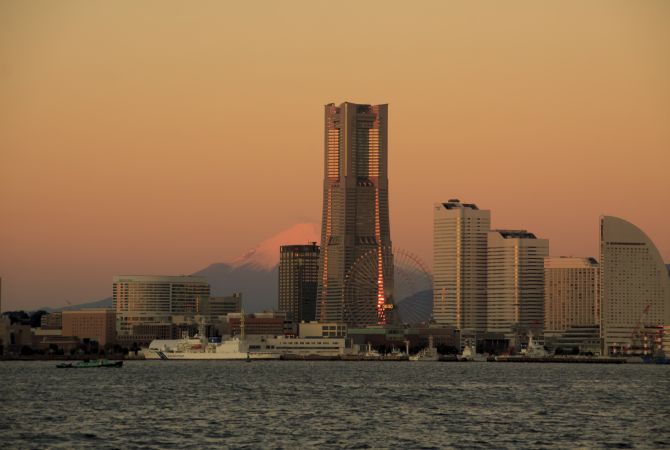
Mt. Fuji is a prominent part of the Yokohama skyline and can be seen from many of the high-rise towers in Minato Mirai 21 .
25. Miho Matsubara
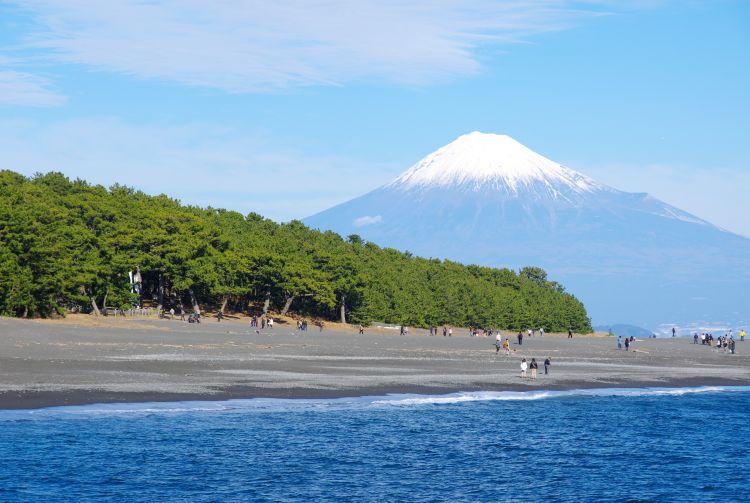
Depicted in artwork from centuries past, the coastal pine grove of Miho-no-Matsubara Pine Grove set to the backdrop of Mt. Fuji has long been one of the most iconic views of the mountain.
24. Fuji-Q Highland
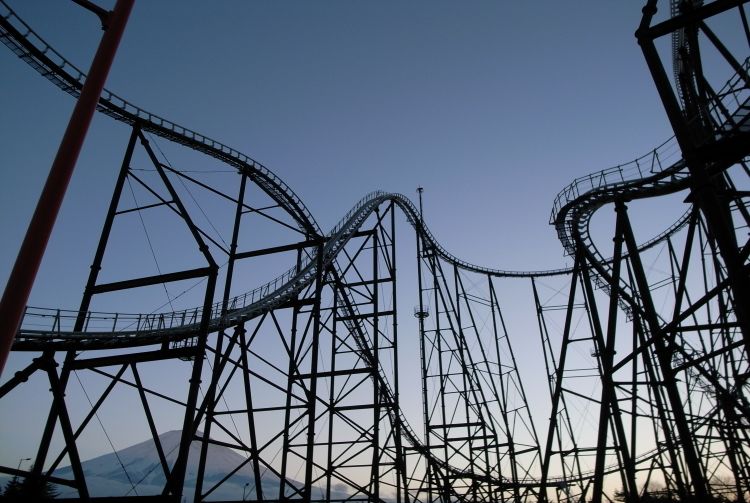
Recommended for fans of white-knuckle rides, visit Fuji-Q Highland for views of the mountain from the park's hair-raising attractions.
23. Nihondaira Ropeway
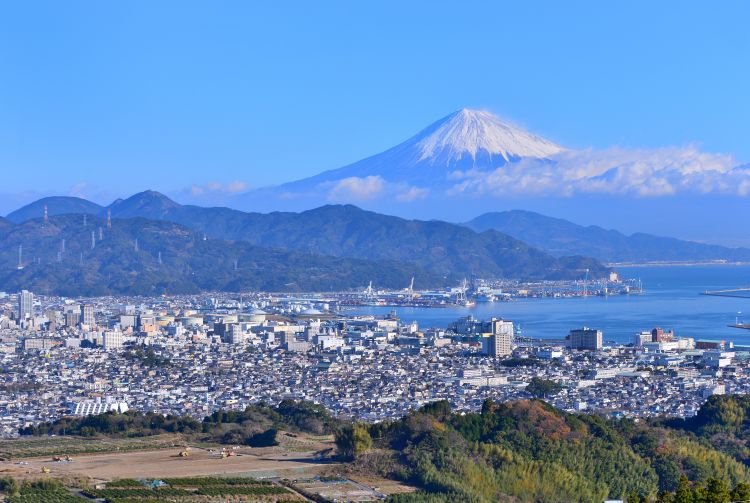
Ropeways offer spectacular mountain vistas, and the Nihondaira Ropeway in Shizuoka is no exception. Gaze out at Mt. Fuji as you make your way up a smaller mountain to a stunning shrine at its top.
22. Isshiki Beach
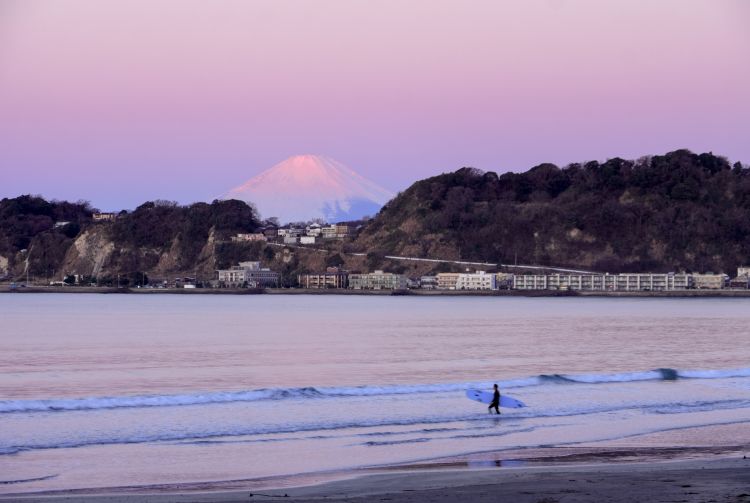
This 500-meter-long stretch of sand is a popular beach destination from Tokyo with impressive sunsets and distant views of Mt. Fuji. Take in the scenery while enjoying a cocktail at one of the beach bars open in the summer season.
21. Lake Saiko
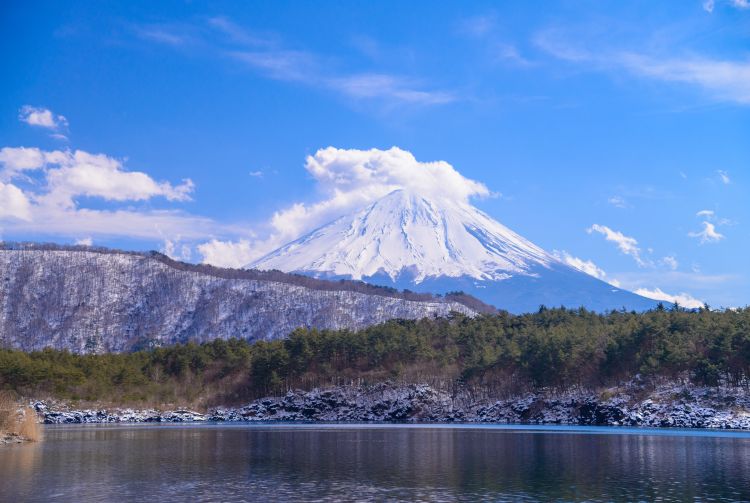
For some of the most tranquil views of Fuji, and the only views from Lake Saiko, head to the western shore. While in the area, pay a visit to one the nearby caves.
20. Lake Shojiko
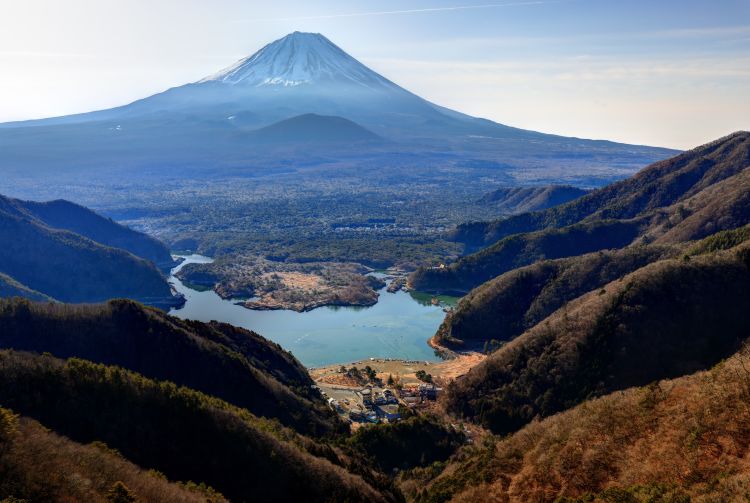
Lake Shojiko is the smallest of the Fuji Five Lakes and largely undeveloped. The few hotels on its northern shore offer excellent views of Mt. Fuji.
19. Gotemba
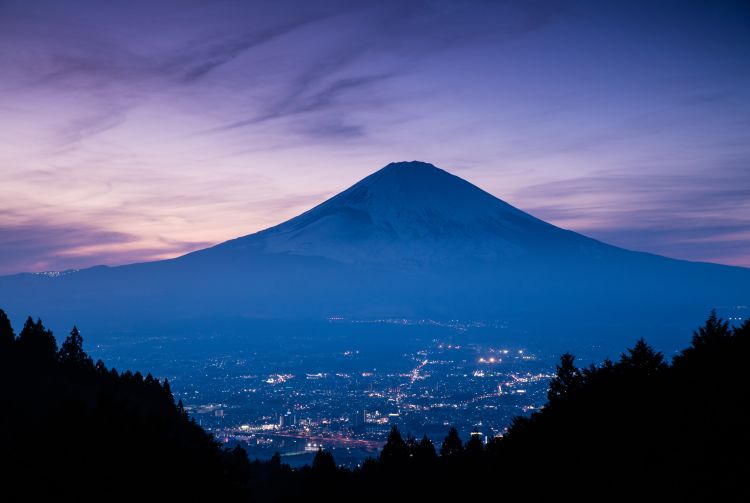
Flanking the southeastern side of Mt. Fuji, the mountain can be seen from almost anywhere in Gotemba, including from the city's popular outlet shopping mall. Elevated locations south of the city offer charming views at dusk.
18. Nishiizu
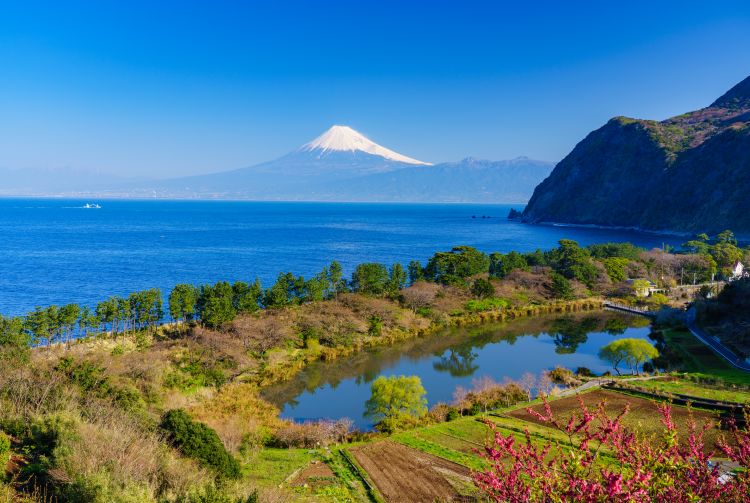
Take in rural views of Mt. Fuji from Nishiizu's coastline, which zigzags along the Izu Peninsula's western shore. To the south of Nishiizu is Dogashima Onsen, one of the very few places where you can gaze upon Fuji while soaking in a relaxing bath across Suruga Bay.
17. Lake Motosuko
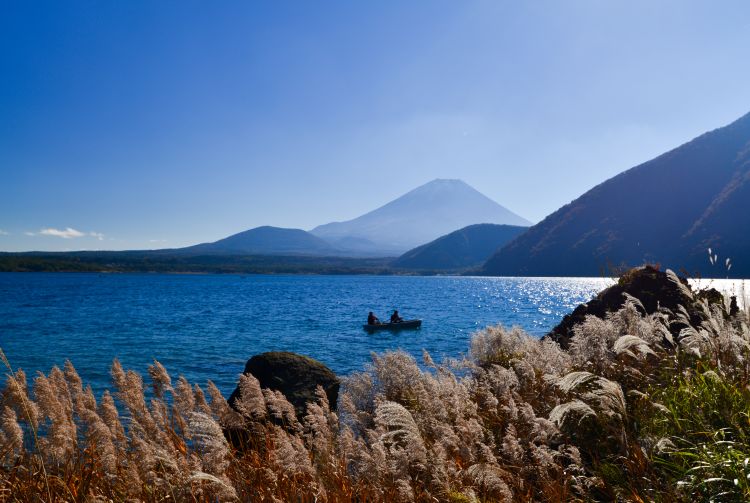
The westernmost of the Fuji Five Lakes , Lake Motosuko is the lake that appears on Japan's 1,000 yen note. Quite rural, it can be difficult to access by public transportation, but is worth it for the views you can get while camping, fishing or boating.
16. Tagonoura Port
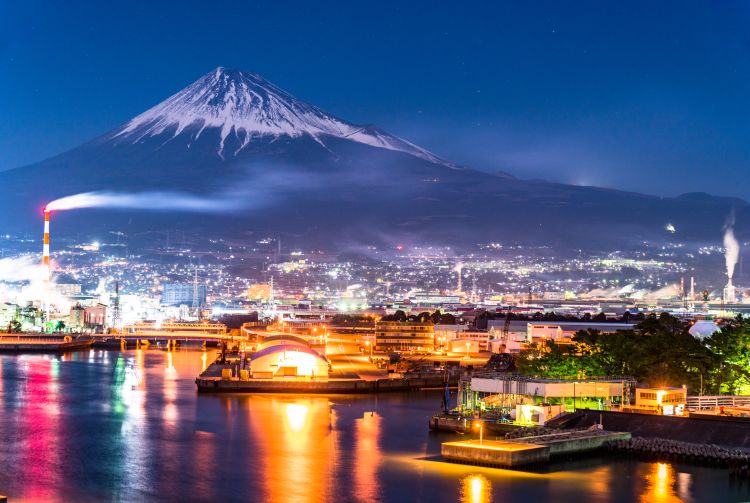
Featuring in Japan's oldest poetry anthology, this area is now home to an industrialized fishing port, and remains a popular spot to visit for views of Mt. Fuji. You will find wonderful views from the top of a small hill to the east of the port.
15. Asagiri Kogen
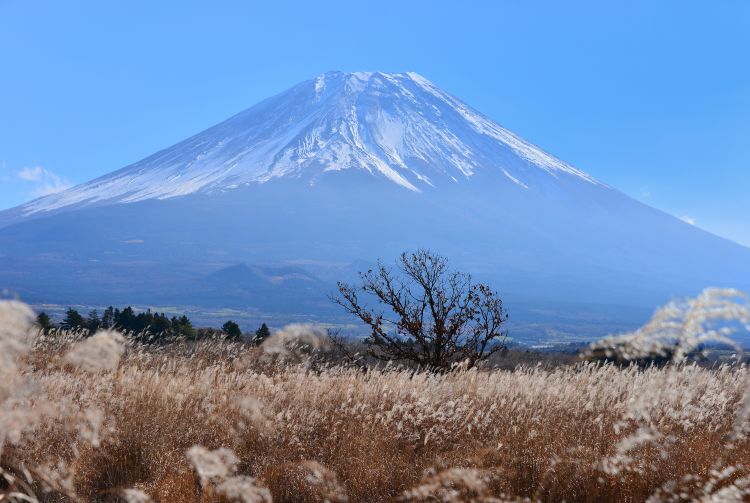
The vast plains of this plateau at the western base of Mt. Fuji offer unobstructed views of the mighty mountain. Visit in autumn for views of Mt. Fuji from fields of golden pampas grass.
14. Izu Panorama Park
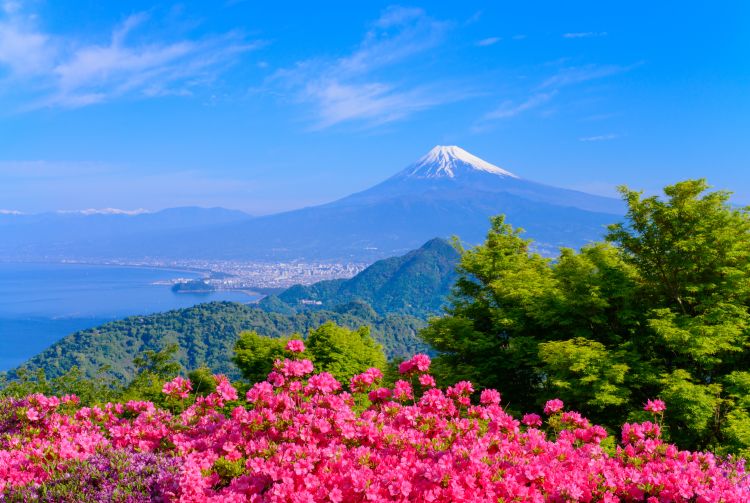
As the name suggests, this expansive park boasts sweeping panoramic views. Stroll the area for views of Mt. Fuji, the Izu Nagaoka hot springs area and Suruga Bay. To see the azalea in bloom, plan to visit in late spring.
13. Tokyo Skytree
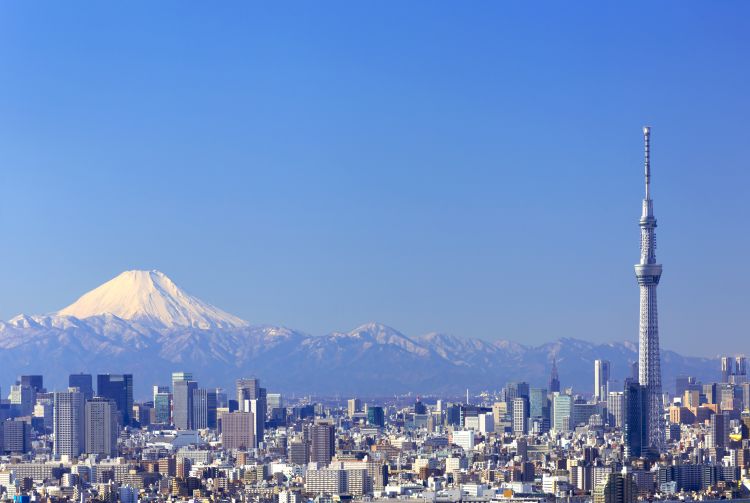
One of the tallest towers in the world at 634 meters, Tokyo Skytree's observation deck offers wonderful panoramic views of Tokyo and its surroundings, including Mt. Fuji on a clear, sunny day.
12. Tenjoyama Park
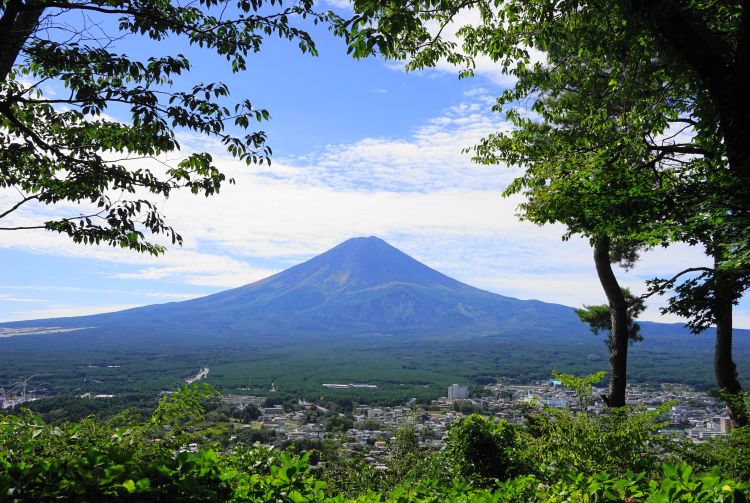
Take the Mt. Fuji Panoramic Ropeway up to Mt. Tenjo for sweeping views of Mt. Fuji from heights of 1,000 meters. If you are feeling active, you may want to take one of the nearby hiking trails to the top instead.
11. Enoshima
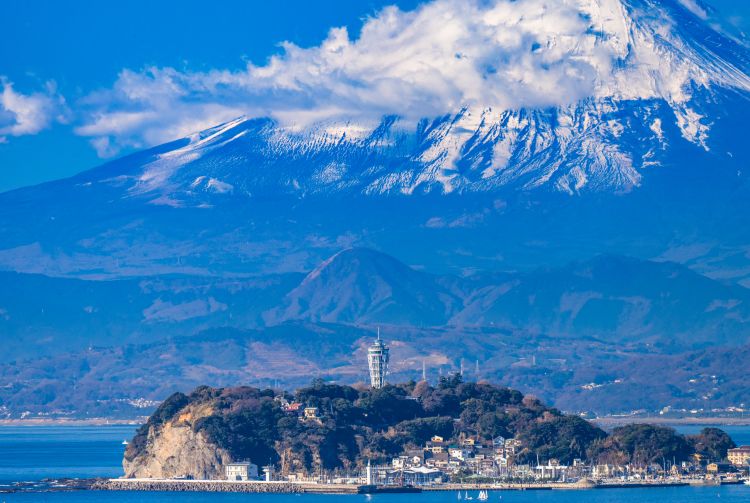
A popular excursion from Tokyo, this small island off the coast of Kamakura offers beautiful seaside views of Mt. Fuji. Climb the Enoshima Sea Candle for a good vantage point. Cooler temperatures and low humidity make for the best viewing conditions.
10. Saiko Iyashi no Sato nenba
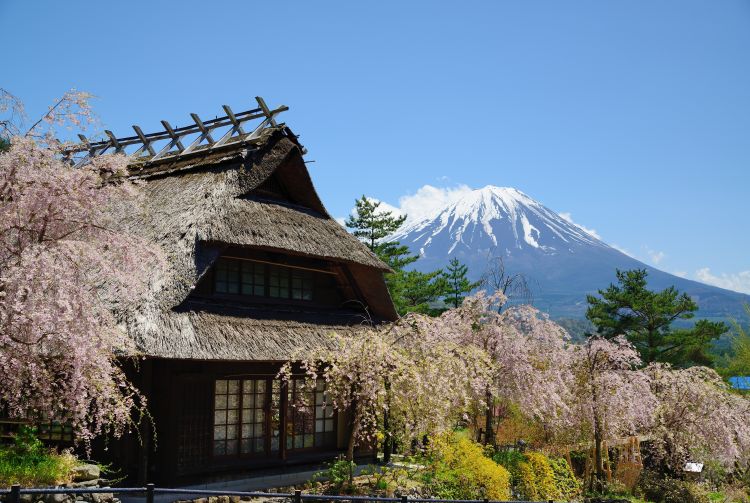
Saiko Iyashi no Sato nenba is a cultural park featuring thatched-roof cottages that house galleries, shops and restaurants. Visit for picture-perfect views of Mt. Fuji with a serving of traditional culture.
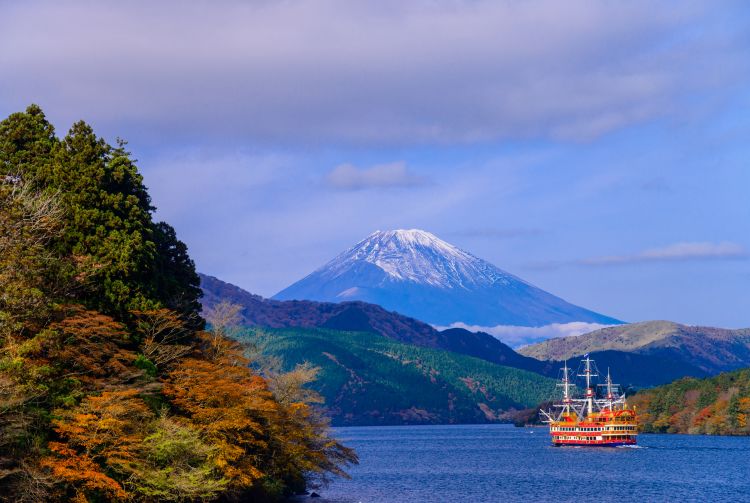
Crowned by Mt. Fuji, Lake Ashinoko is the majestic symbol of Hakone . Take to the water on one of the popular boat cruises for the best views. The winter months offer the sharp and impressive vistas.
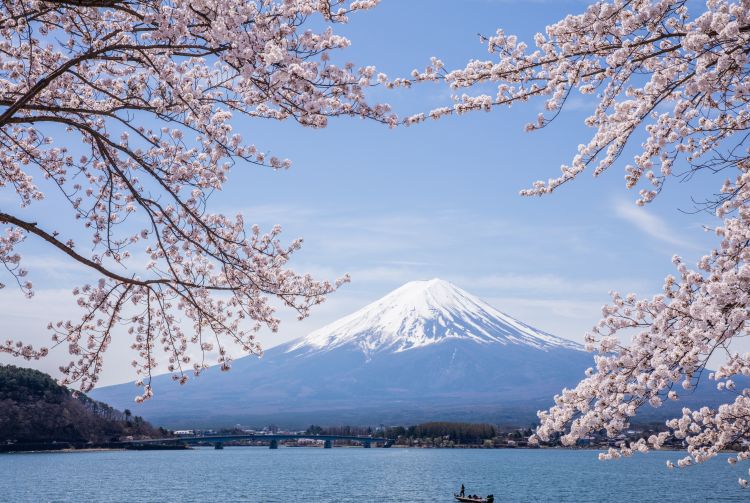
Lake Kawaguchiko is the most easily accessible of the Fuji Five Lakes and offers postcard-worthy views of Mt. Fuji from all around the lake. You can frame a snow-capped Fuji with cherry blossoms from Ubuyagasaki in spring, or capture the mountain from Oishi Park in early summer when lavender is in bloom.
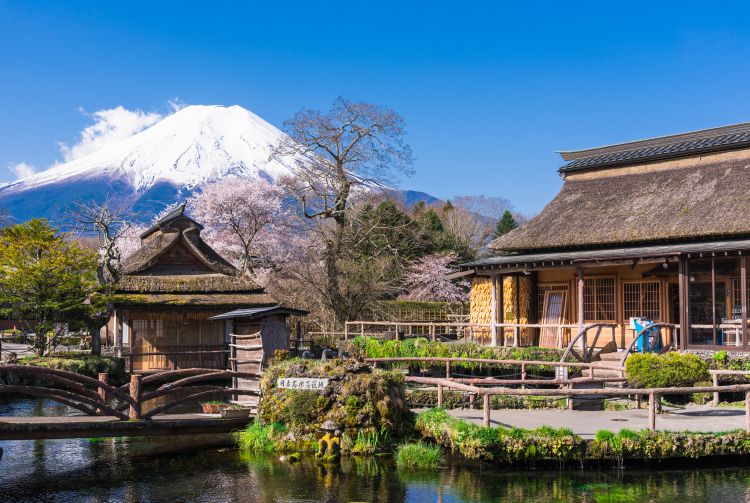
Tour the eight ponds of Oshino Hakkai Springs to the north of Mt. Fuji for rustic views of the mountain complete with thatched cottages, waterwheels, and decorative bridges.
6. Lake Yamanakako
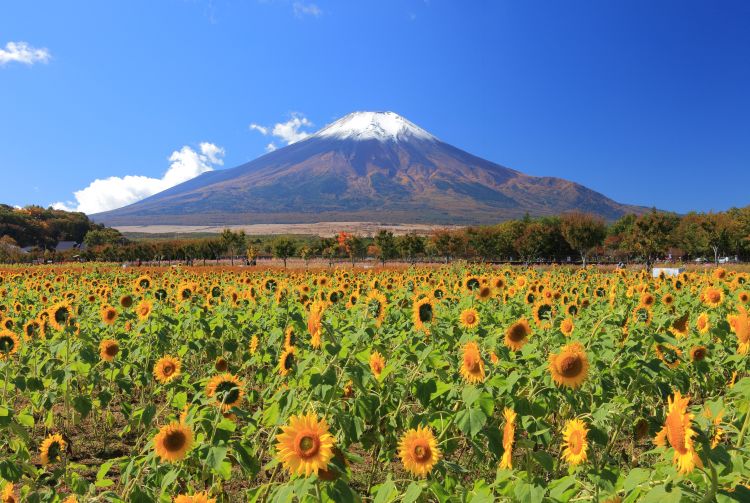
The nearest lake to Mt. Fuji Lake Yamanakako is known for Hana no Miyako, a huge park with enviable views of the mountain. The fields of sunflowers in summer and cosmos in fall make for a stunning photograph.
5. Lake Tanukiko
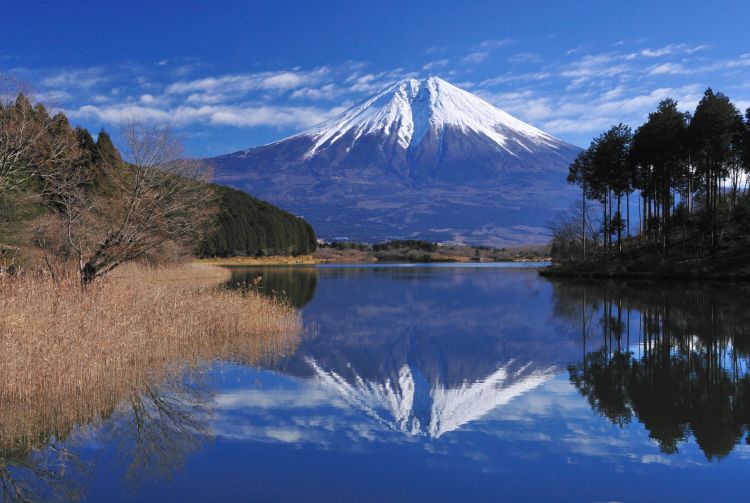
The calm, mirror-like surface of Lake Tanuki, in the Asagiri Highlands, serves up a high-definition reflection of Mt. Fuji hard to find anywhere else.
4. Urui River
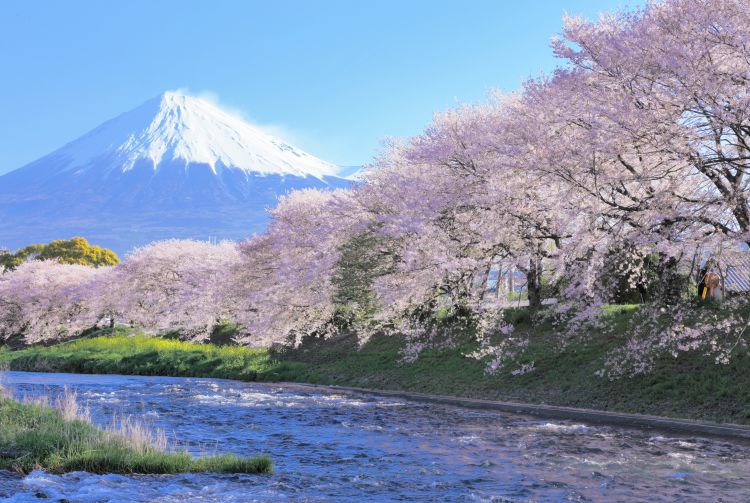
Running from the southwestern foot of Mt. Fuji and connecting with the Pacific, the Urui River offers grand views of the mountain. It is especially beautiful in early April, when cherry blossoms bloom along its banks.
3. Tokyo Metropolitan Government Office Observatory
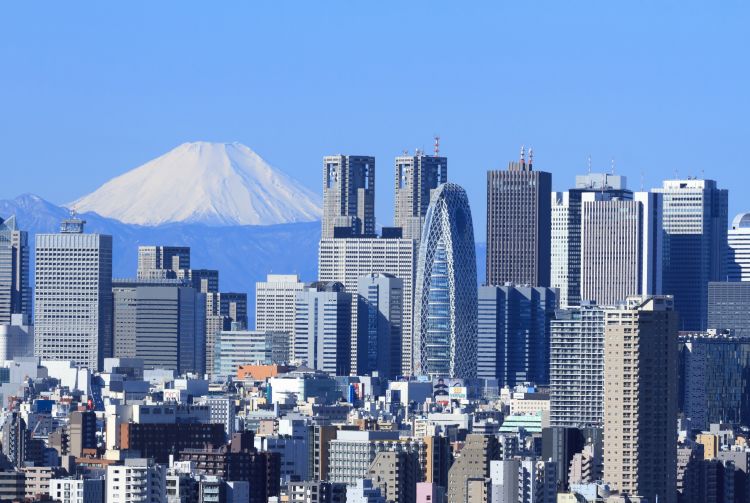
This iconic Shinjuku high-rise complex has two towers, each with an observatory on the 45th floor, 202 meters from ground level. On a clear day, you can see Mt. Fuji well. Best yet, the observatories are completely free of charge.
2. Imamiya Tea Field
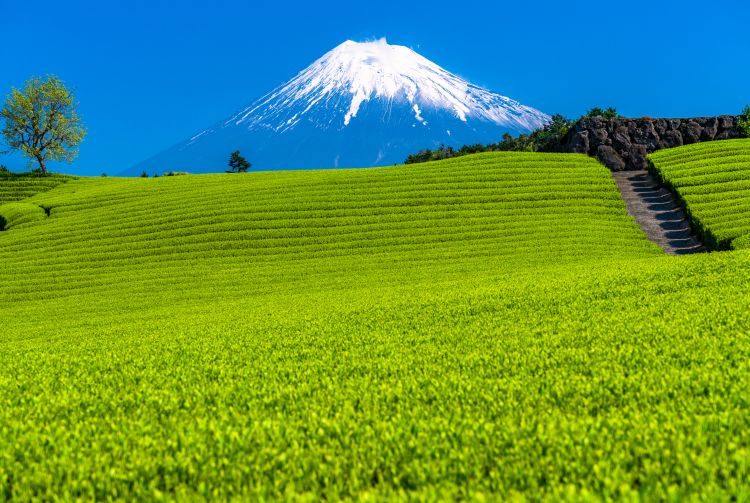
Fuji City in Shizuoka , just 30 kilometers from Mt. Fuji, is known for its splendid green tea. The verdant tea fields contrast exceptionally with the soaring mountain in the background. Come in May when the leaves are at their greenest and not yet picked.
1. Akakurayama Sengen Park
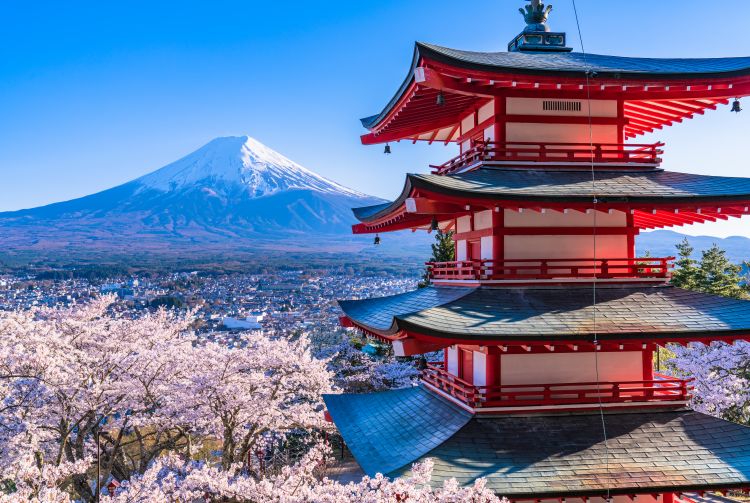
For a photo that screams Japan, this five-storied pagoda is the place to go. Catch the cherry blossoms in bloom here in spring for the ultimate composition.
Where to see Mt. Fuji
From one of the towering skyscrapers in Tokyo or Yokohama
From the shinkansen or car when traveling between Tokyo and Kansai (from Tokyo, sit on the right side, from Kansai, sit on the left side)
From almost anywhere in the Fuji Five Lakes area in Yamanashi Prefecture
From many Shizuoka prefecture destinations including the Izu Peninsula
From coastal regions including Chiba, Kanagawa, and the Izu Islands south of Tokyo
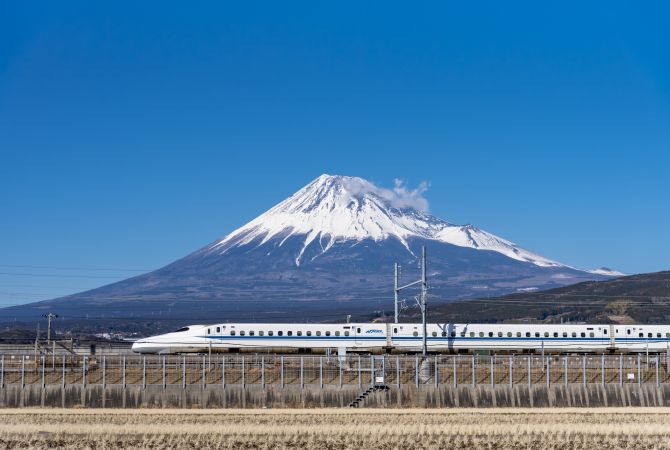

When to see Mt. Fuji
Mt. Fuji is often obscured by clouds during the rainy season from early June to mid-July
Early morning or late afternoon are best for up-close views of the mountain
From afar, crisp, clear winter days offer the best viewing conditions
Diamond Fuji, when the rising or setting sun aligns with the peak of the mountain, occurs from late October to late February
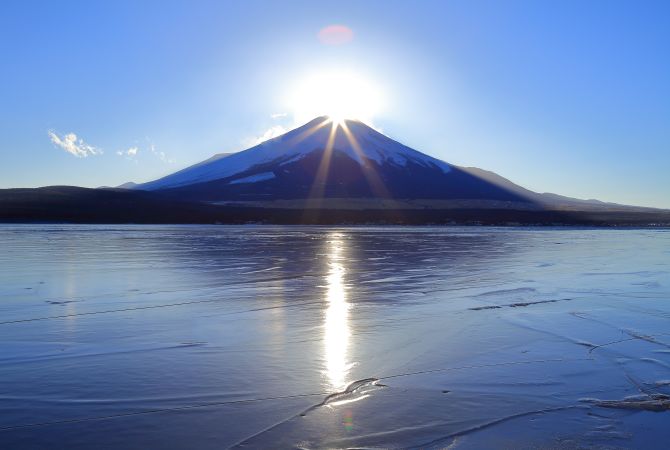
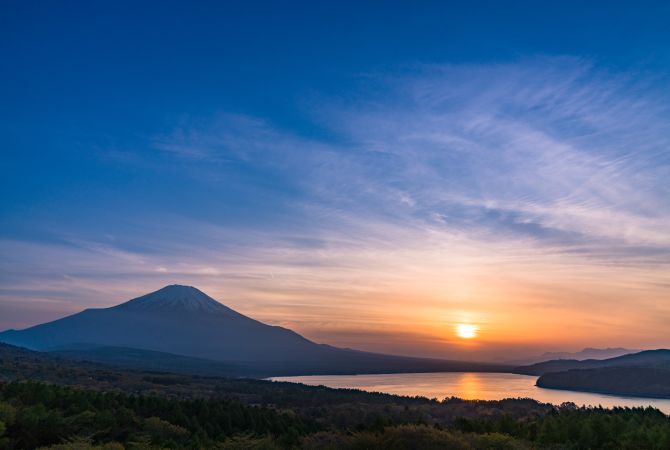
The latest information may differ, so please check the official website






























































